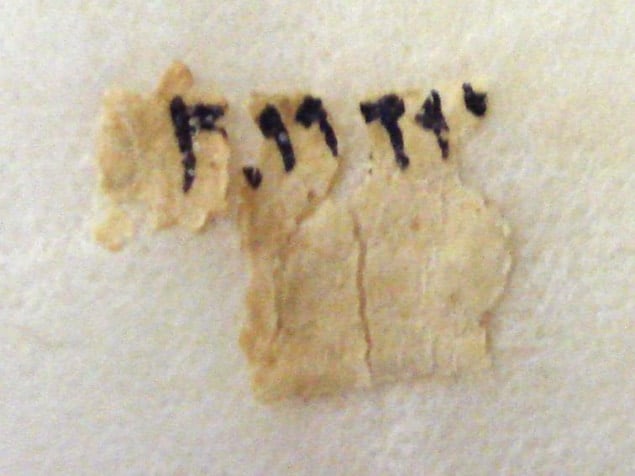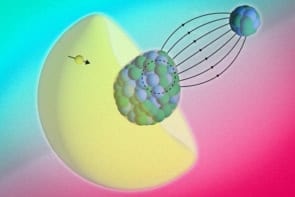
Physicists in Italy have provided further clues as to the origin of the Dead Sea Scrolls using a new method that relies on emissions from a radioactive source. The portable technique, known as XPIXE, could be used to complement analyses of ancient artefacts currently carried out at particle accelerators.
PIXE – particle-induced X-ray emission – involves firing protons at a sample and then measuring the X-rays emitted by specific elements excited within the material, with the energy of the X-rays identifying the elements in question. First proposed in the 1970s, PIXE has undergone several developments but in general requires a particle accelerator.
XPIXE, developed by Giuseppe Pappalardo and colleagues at the labs of the Italian National Institute of Nuclear Physics (INFN) in Catania, Sicily, instead uses the radiation from a source of curium-244, which emits both alpha particles and X-rays. Alpha particles stimulate emission from light elements within a sample while X-rays cause emission from heavier elements. Measuring just 30 cm across, the XPIXE device is portable and has previously been used to analyse wall paintings and decorated vases.
Oldest known biblical texts
Pappalardo and colleagues analysed four centimetre-sized fragments from one of the Dead Sea Scrolls, a set of about 900 documents found in several caves near the Dead Sea half a century ago that constitute the oldest known biblical texts, dating back to between 200BC and 70AD. The actual scroll studied by Pappalardo’s group is not part of the Biblical narration but instead describes the construction and life of a temple and the communication of laws.
Like other parchments, this “Temple scroll” was made from animal skin and was washed extensively during its production. The researchers used a combination of XPIXE and PIXE (with a 1.3 MeV proton beam) to establish that all of the fragments contained chlorine and that the ratio of bromide to chlorine within the fragments was about three times higher than is normally found in sea water. They therefore concluded that the scroll was made from water from the (very salty) Dead Sea – in other words that the scroll was made close to where it was found, in Qumran.
Plans to look at ink
Determining where the scroll was made is important, says Pappalardo, because it could reveal trading links between different regions in the past (were the scroll to have been made in one place and then used in another). Although that was not the case with the Temple scroll he regards it as an achievement to have used his technique to analyse such an important artefact. He adds that his team now plans to analyse the ink used to write the scroll, which he says should reveal where the documents were written rather than where the parchment was made.
In general, Pappalardo envisages XPIXE being used on site in museums and other places to provide a “screening” of the elements contained within an artefact. This initial analysis could then be complemented by a more in-depth study using accelerators, which operate at a much higher intensity than the XPIXE radioactive source and can therefore identify elements at very low concentrations.
The results were presented at the PIXE 2010 conference in Surrey, UK.


